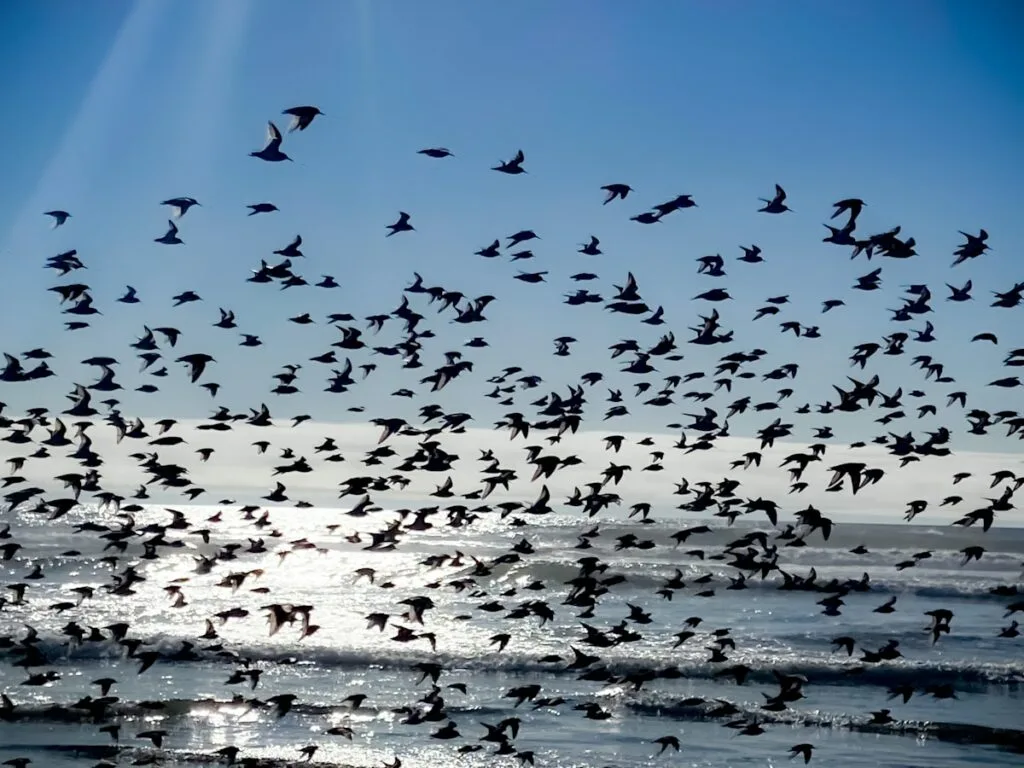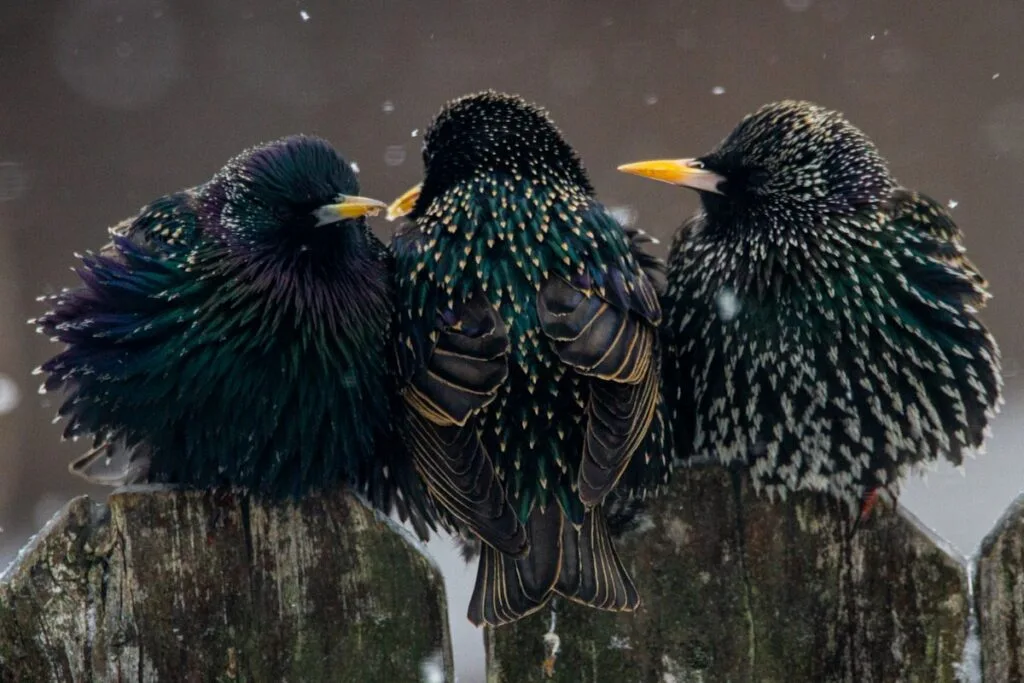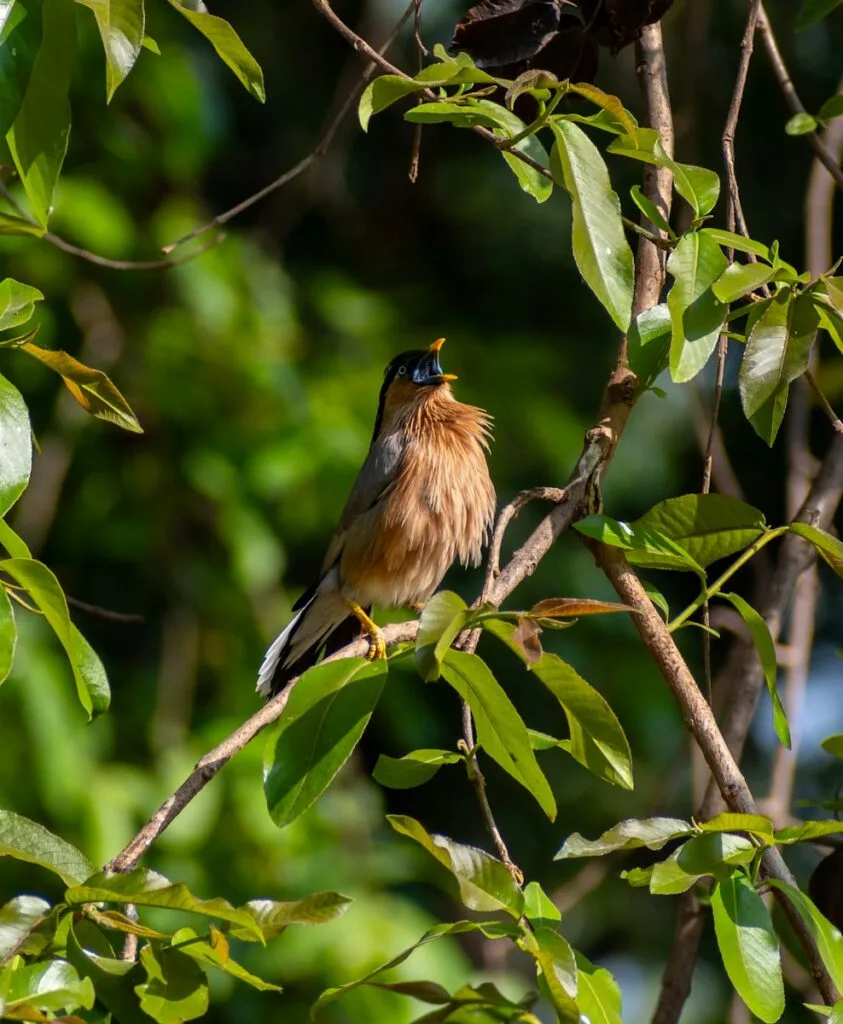How to Move as One: Learning to Fly High Together- the Blueprint for Harmony
How so many birds can move as one, with such seamless, unspoken precision?
Physics, neuroscience and a new branch of computational biology that models collective behavior, are building the answer. Can we learn to fly high together? Can we remember the blueprint for harmony from birds?

In the pink-orange hush of twilight, a pulse spreads across the sky above the fields in the English countryside. Thousands of starlings swirl into view, their tiny silhouettes folding and unfurling like an immense, breathing organism. For centuries, murmurations, this stunning, shifting clouds of birds, have sparked awe, myth and wonder. But only recently have scientists begun to understand how so many birds can move as one, with such seamless, unspoken precision.
Physics, neuroscience and a new branch of computational biology that models collective behavior, are building the answer, not just for the birds flying together on the sky, but across the animal kingdom. Can we learn the blueprint for harmony from birds?
Flying Together with No Lead Bird
One of the most surprising discoveries is that murmurations are decentralized. There is no lead bird giving orders. Instead, each bird interacts with a small number of its neighbors—usually six or seven—and adjusts its flight based on their movements. These local interactions form a network that’s both highly responsive and remarkably stable.

Using mathematical models borrowed from statistical physics, scientists showed that murmurations operate near what physicists call a “critical point”, a sweet spot between order and chaos where systems are maximally sensitive to external inputs. In this state, if one bird shifts direction, the entire flock can change course almost instantly.
Even more astonishing is the speed at which information moves through a flock. In a 2023 study published in Nature Communications, researchers tracked 3D positions and velocities of hundreds of starlings in flight and found that directional changes propagate through the flock at speeds exceeding 120 feet per second—significantly faster than a bird’s own reaction time.
Recent studies suggest that such coordination might be partly hardwired. Brain scans of birds reveal highly efficient visual processing systems, allowing them to track multiple objects simultaneously and react to subtle shifts in speed and angle. In some species, such as European starlings, the eye placement and neck flexibility allow near-360-degree vision—ideal for keeping tabs on one’s neighbors mid-flight.
The evolution of such coordination likely stems from a need for survival. A tight, fast-moving murmuration makes it far harder for predators, such as peregrine falcons, to isolate and target a single bird.
In fact, studies have shown that murmurations often respond dynamically to predator attacks, reshaping their form into waves, balls or vacuums, empty spaces that open suddenly in the middle of the flock, confusing the attacker. These shifting patterns are not just beautiful, they’re strategic. Scientists see murmuration is a defense system, without a central commanded, with a constant exchange of motion.
Can We Move as One with Nature?
Understanding how birds flock has implications far beyond ornithology. Scientists are using the same principles to design swarms of drones, self-driving car fleets, and even financial market models. Innovators are learning from nature how to build systems that are robust, decentralized and capable of adapting to unexpected threats. Can we learn from the birds how to move as one?
Yet as we come closer to decoding the secrets of hidden intelligence, we risk losing them. Urban sprawl, climate change and habitat degradation are affecting starling populations across Europe and North America. In some areas, once-thriving murmurations are shrinking or disappearing altogether.
“We may be the last generation to witness these displays in the wild,” says Cavagna. “And if we lose them, we’re not just losing beauty—we’re losing a blueprint for harmony.”
So the next time you see the sky darken with wings at dusk, pause. You are watching more than just birds in flight. You are watching a miracle of physics, evolution, and memory in motion—a murmuration, whispering the secrets of collective intelligence.
But even as we begin to understand the secrets of murmurations—the invisible threads that bind thousands of starlings into a single, pulsing rhythm—those very rhythms are fading from the skies. Across their native range, starlings are disappearing, their flocks thinning like mist in the morning light.

In Britain, starling populations have plummeted by more than 50 percent over the last six decades. In Denmark, where the legendary “sort sol” black sun once turned the twilight skies into vast, shape-shifting murals, numbers have dropped by 60 percent.
The same story plays out across Europe and North America, where once-common birds are vanishing in staggering numbers.
Between the 1960s and today, Europe has lost over 550 million birds. North America has lost 2.9 billion—nearly one in four individual birds. Many of these are species we thought of as abundant, even invincible: sparrows, blackbirds, warblers, finches. Starlings, with all their sparkle and song, are among them.
As birds vanish, so does a part of our own memory, our own identity. We are nature. We are not separate from it. When we lose these birds, we are losing parts of ourselves.
Rob Hughes, British ecologist

This loss is not abstract. It’s measurable in the empty silence at dawn, in the absence of fluttering wings above farm fields, in the stillness where there was once the rush and roar of feathers at dusk. It’s felt in our own bodies—in rising stress, in loneliness, in the yearning for something we can no longer name. Research has shown that exposure to birdsong reduces anxiety and boosts mental health. Watching birds, even briefly, improves concentration and creativity. The presence of birds in a neighborhood is correlated with increased life satisfaction.
But these invisible gifts are vanishing along with the birds themselves.
Preserving the Blueprint of Harmony
The disappearance of starlings and other birds is not inevitable. It is not a law of nature. It is the consequence of choices we make every day, some made generations ago, some being made today. But if we can cause such decline, we can also choose to reverse it.
Rewilding efforts across Europe have begun to stitch back fragments of habitat. Organic farming and pesticide-free corridors are drawing back insect populations, the crucial food base for so many birds. In cities, bird-friendly architecture and lighting policies are helping mitigate the human-built dangers of glass and glare.
And perhaps most importantly, there is a rising movement of people rediscovering their connection to the skies.
As long as some birds still rise, there is hope. The murmuration seems to be a beautiful performance but is raising a few questions:
- Can we still move as one?
- Can we still respond to the signals of change, the calls of warning, the subtle shifts in wind and light?
- Can we remember to live in harmony?
We know now how thousands of birds move in harmony without commands. The real question is whether we, as a species, can do the same. Whether we can relearn the language of cooperation, of responsiveness, of belonging to something greater than ourselves.
The sky is still breathing. But the flock is thinner now. And it needs us to listen.
Do you want to share your story and inspire our readers ? Know that YOUR EXPERTISE is paving the way for a fairer, happier society.




